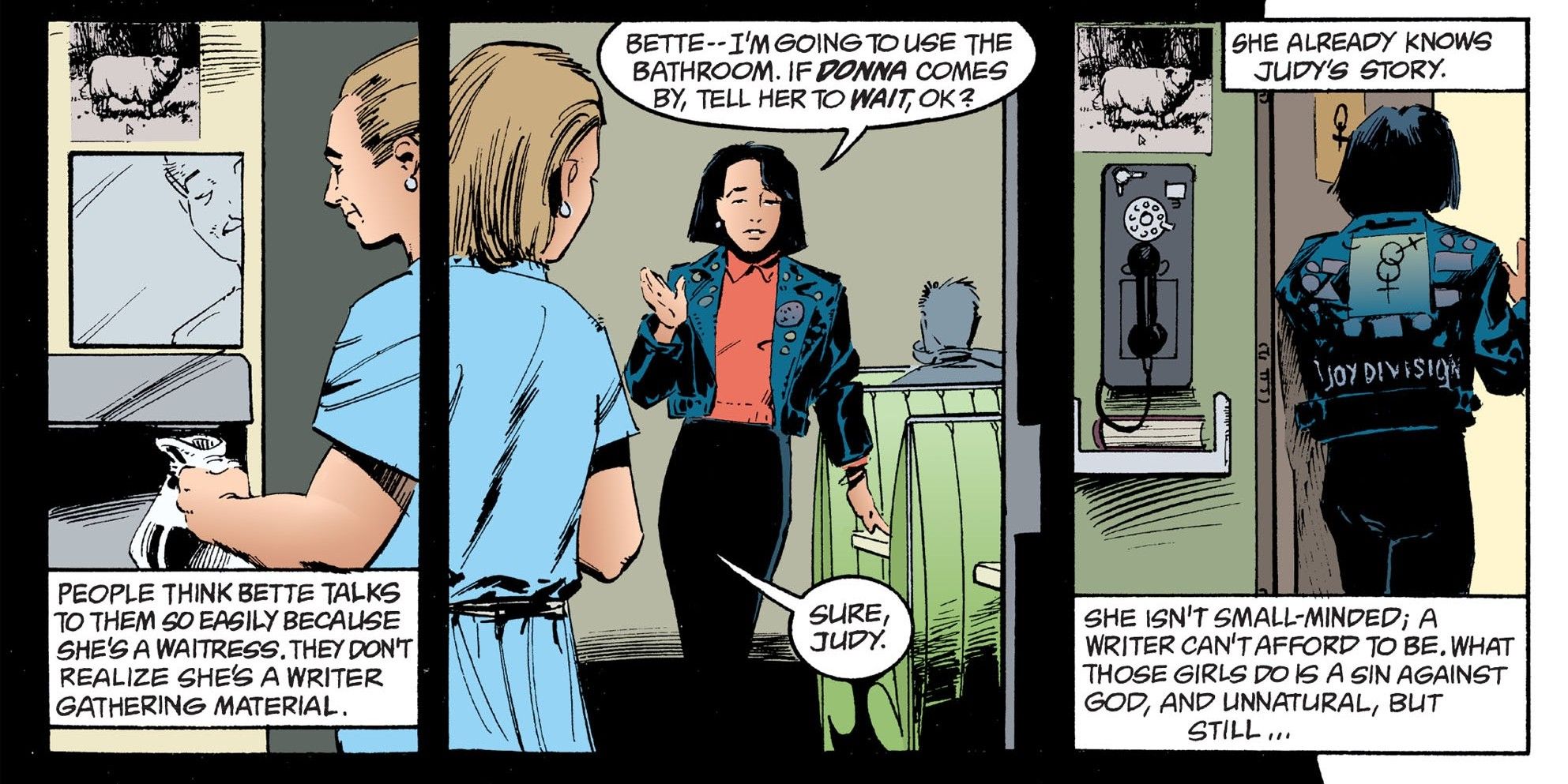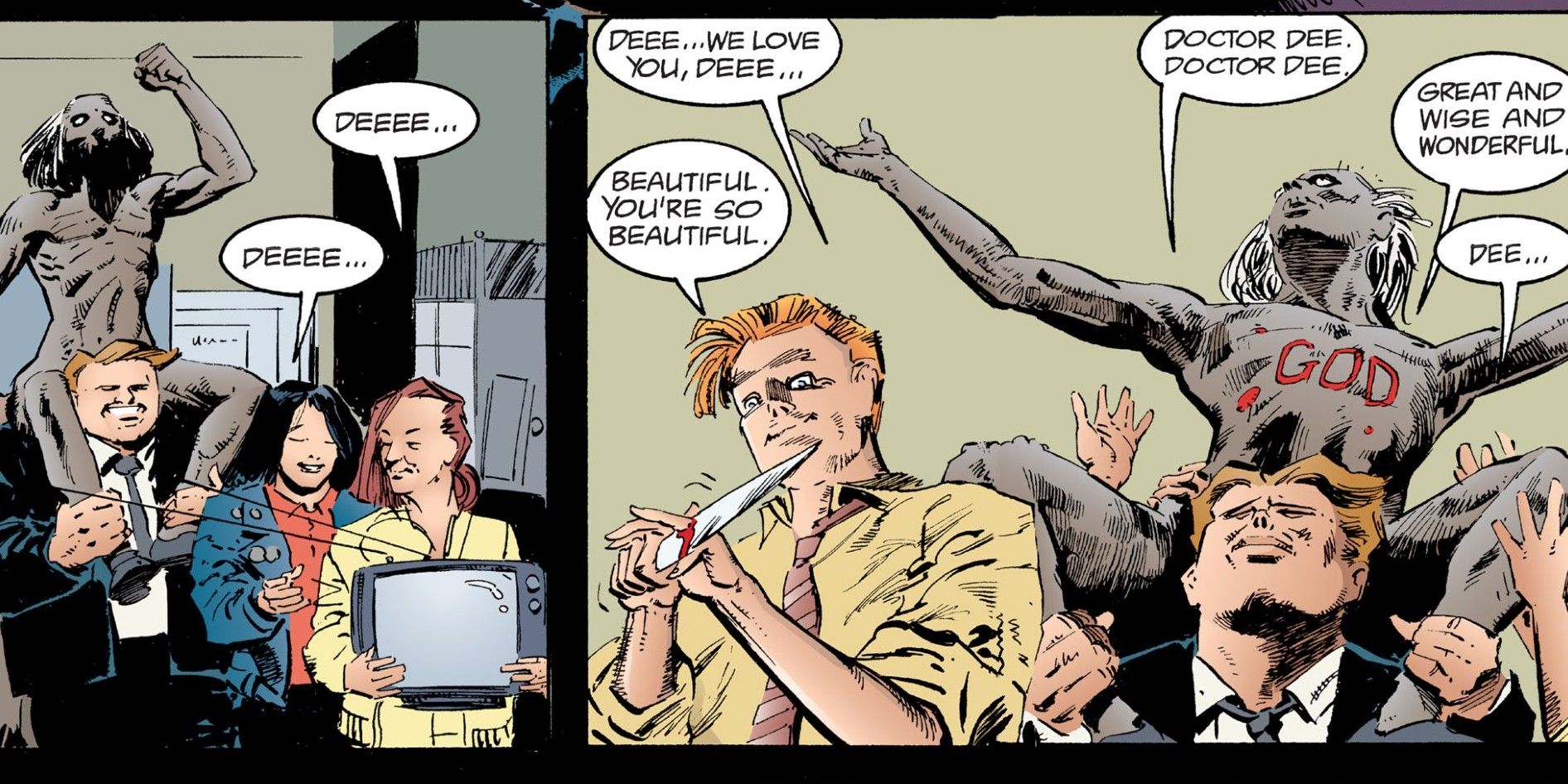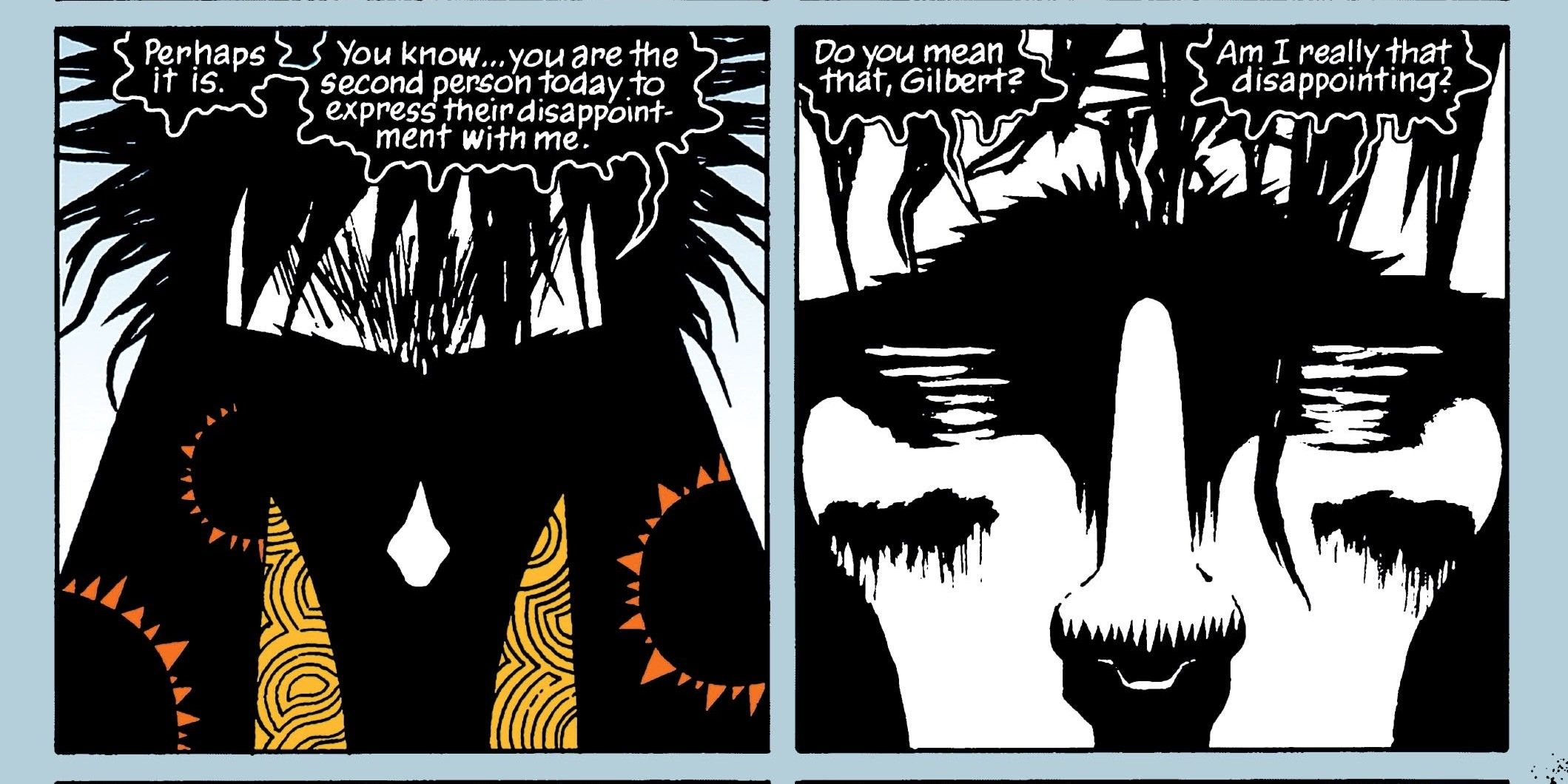What makes a real good vs. evil showdown? Is it the stakes involved, the emotional depth, or the reflective qualities of the opposing hero/villain dichotomy themselves? In Neil Gaiman’s The Sandman, written in many respects as a meta-commentary on the nature of storytelling itself, it is among the first questions the story attempts to answer, as Dream of the Endless takes on his first villain Doctor Dee. Though it may have been difficult to predict at the time, perhaps what has made this hero/villain match-up such an enduring and shining example of this trope within the medium is in how this initial-arc climax not only delivers on the harrowing premise but also perfectly predicts the demise of the protagonist, Lord Morpheus himself, in expert fashion.
Now the subject of a hit television series on Netflix, the initial story-arcs of Sandman have often been cited among fans and critics as being too indulgent in the horror genre from which the series arose, and also somewhat at odds with the more philosophical path the series would later take, as the adventures of Dream, known as Lord Morpheus, would often take a backseat to the tales of other supporting characters and historical episodes. Indeed, the more superhero-reminiscent battles of the early issues, most notably with Dee and Lucifer, would turn out to be the only such conventional supervillain/superhero conflicts in the entirety of the 75-issue run. However, even with these early episode tonal dissonances, Gaiman ultimately would deliver on his promise of narrative cohesion despite the often chaotic and experimental structure that would later become his trademark. By having his villain, Dee, almost perfectly predict the tragic downfall of Lord Morpheus, Gaiman showcases his penchant for using people as tools.
King of a Lost Kingdom

When the series commences, Lord Morpheus has spent the last 70 years as a prisoner, resulting in the dereliction of his kingdom, known as The Dreaming, and the theft of his three magical tools (his pouch of sand, helm, and ruby). It should be noted that these all-important tools and all the creatures within The Dreaming, as well as the idea of The Dreaming itself, are simply manifestations of Morpheus’ power: they literally are pieces of him he has separated from himself and given sentience in order to assist him. They are actually merely extensions of his will.
In the comic series, John Dee is actually an established character when he is introduced: the villain Doctor Destiny, who, since his debut as a Silver Age villain, has used Dream’s ruby, known as “The Materioptikon,” to manipulate reality, often using the power of the gem within his dreams to change the waking world. When introduced in The Sandman, Dee has gone insane after losing the ability to dream, leading to the tragic events that occur following his escape from Arkham Asylum, detailed in the now legendary The Sandman #6, entitled “24 Hours.”
Dee, having escaped the asylum and reclaimed the ruby, begins a villainous plot to drive the entire world into insanity, using six innocent bystanders he finds in a diner as his guinea pigs whom he tortures to death over a period of 24 hours, while sporadic news broadcasts indicate ever greater calamity in the world outside. Possessing the unstoppable ability to override and control emotions and thoughts using Dream’s stolen power, Dee takes sadistic glee in stripping his victims of their dignity and free will before finally driving them to animalistic murder and suicide, until Dream himself finally arrives to reclaim his stolen ruby.
It should be remembered that, as a primordial personification of humanity’s capacity to have hopes and aspirations, Dream’s duties involve inducing people who enter The Dreaming into better understanding themselves by interacting with their subconscious desires. In this way, he promotes their well-being and personal evolution. In the nightmarish sequence of “24 Hours,” Dee uses the tool Morpheus created to aid him in this mission as a cudgel with which to punish the innocent simply because “he can,” creating a volatile and violent vision of a world without empathy or meaning. Eventually, he elicits confessions of vile acts from each of his victims, before forcing them to painfully end their lives in retribution.
A Dream Without Mercy

The original story-arc featuring Dee was published in 1989. The Sandman would continue under Gaiman for another seven years, and drastically change in concept. Following Dream’s victory over Dee, readers see the villain destroy the ruby whilst in The Dreaming thus inadvertently restoring those powers to Lord Morpheus. The series becomes more of an exploration of Dream’s personality and psychology, often through the lens of how his long existence has effected the lives of other people.
Frequently throughout the story, Gaiman demonstrates that, in his interpersonal relationships such as with his lover Nada and his son Orpheus, Dream has often behaved mercilessly, without regard for their suffering. While he enacts these punishments in the name of a supposed duty to see their stories come to a just end, by the conclusion of the series, in which time the narrative has drastically expanded to include dozens of storylines and POV characters both fantastical and pedestrian, it is clear that Morpheus has begun to feel serious doubt regarding his judgment in these matters.
The penultimate arc of Sandman, called “The Kindly Ones” is among the most quizzical and convoluted conclusions to a series in the history of comics, no less because, in its own strange way, it represents the pinnacle of Gaiman’s style as demonstrated by what the series had become. Morpheus, unable to see a proper conclusion to his own story where he escapes his deserved punishment, sets into motion a series of events which precipitates his own death. His plan, which involves the careful orchestration of the actions of around thirty or so separate characters, eventually leaves him without any alternative other than having his sister take his life so that he may be reborn as a newer, less vengeful version of himself. Ultimately, his motivation in doing so came from his guilt over causing suffering to those whom he had felt deserved it. However, he later came to understand that he was merely ballooning his own sense of moral superiority.
A Lack of Empathy: A Quality Shared By Doctor Dee and Morpheus

In the recent Netflix series, Dee is re-imagined as a victim of his mother’s capricious use of Lord Morpheus’ “secret” gem, with his main motivation for psychologically torturing the people in the diner being explained as his desire to see people be more “honest.” Similar to his comic counterpart Doctor Destiny, this explains Dee’s self-justification as being rooted in a lack of empathy for other people, believing their simple social compromises, often based in polite respect, to be unforgivable “lies.” In its own way, this interpretation coincides with an integral flaw in Morpheus himself, perhaps his true tragic flaw: his inability to properly empathize with those who were less powerful than him, particularly those of the mortal realm.
How Dream’s Death Was Predicted
The Sandman has always been about the power of stories, and the way that stories can both evolve into newer, more evocative narratives while retaining some raw strength of the older myths. It is, therefore, fitting that with some clarification from a television adaptation, it is his only true super villain showdown that ends up revealing the most about his character. Despite clearly being the good guy there, Dream’s death was already being predicted by the very force he was fighting against: his own tendency to use other people as tools.




